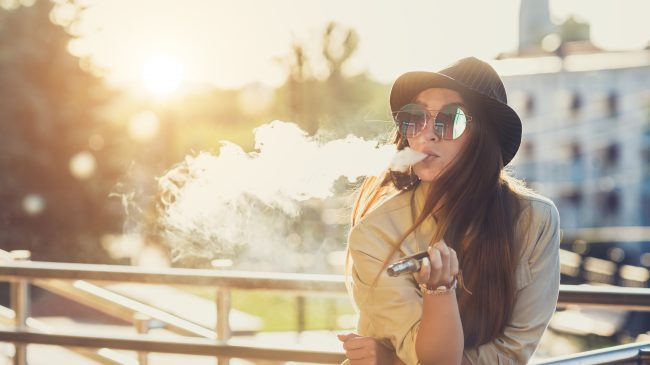Awash in needles, human feces, and facing one of the worst housing crises in the country, San Francisco’s Board of Supervisors has decided vaping is public enemy number one.
On Tuesday, the supervisors voted unanimously to ban the manufacture, sale, and distribution of e-cigarettes in San Francisco. A further vote next week is needed to finalize the ban.
In a city where marijuana is mercifully legal, heroin injection sites are being prepared to reduce drug overdoses, and bars remain ubiquitous, it’s beyond parody to single out the most popular and effective tool for quitting smoking as a unique evil worthy of prohibition.
The impetus for the ban is the sudden rise of youth vaping. In the past year, there’s been a spike in the number of high schoolers using e-cigarettes, eliciting a moral panic the fury and intensity of which we haven’t seen since “reefer madness.”
Cheered on by self-appointed champions of public health, the supervisors fear a wave of nicotine addiction is threatening San Francisco’s youth. Currently, 21% of all high schoolers nationwide are using e-cigarettes at least once a month. But claims of an epidemic of nicotine addiction are divorced from any sense of reality. The number of youth who have never smoked who use e-cigarettes on 20 or more days of the month is less than 1%.
No one wants to see kids hooked on nicotine, alcohol, marijuana, or any product that is strictly intended for adults. But using the specter of nicotine-addled children to deny adult smokers, a lifesaving alternative isn’t just demagogic, it’s disastrous public health policy.
Even the harshest critics of e-cigarettes concede the basic science confirmed by health bodies across the world, that vaping is dramatically safer than smoking. Almost half a million Americans die from cigarettes every year. That’s today’s reality. According to researchers at Georgetown University, up to 6.6 million lives could be saved if vaping replaces smoking in the next decade.
Detaching nicotine from smoke and giving smokers a satisfying alternative they can switch to is one of the most significant health innovations of the 21st century. It’s something to be celebrated and encouraged, not forbidden or stigmatized.
Nicotine, while addictive, is not lethal. As the great public health guru Michael Russell said more than 40 years ago, “People smoke for nicotine, but they die from the tar.”
There are a myriad of ways to address youth vaping. But throwing adult smokers, half of whom will die of a smoking-related disease, under the bus isn’t one of them.
California has already raised the tobacco age to 21, and San Francisco has banned all e-cigarette flavors aside from tobacco and menthol. Neither policy has been evaluated for its effectiveness, and the supervisors appear not to have entertained any of the downsides of full vapor prohibition.
Michael Siegel, a professor in the Department of Community Health Sciences at Boston University School of Public Health, wrote before the vote that “if the ordinance does pass, it will have to go down as the greatest legislative favor ever done in this century to help boost a cigarette company’s profits.”
In a city allegedly concerned with health, the Marlboro man sleeps easy, and Joe Camel is left unmolested. But products that have switched millions of people away from cigarettes are to be banished. An opponent of the tobacco industry for decades, Siegel concludes, “From a public health perspective, this is the most insane piece of legislation I have ever seen.”
This article first appeared in the Washington Examiner.

